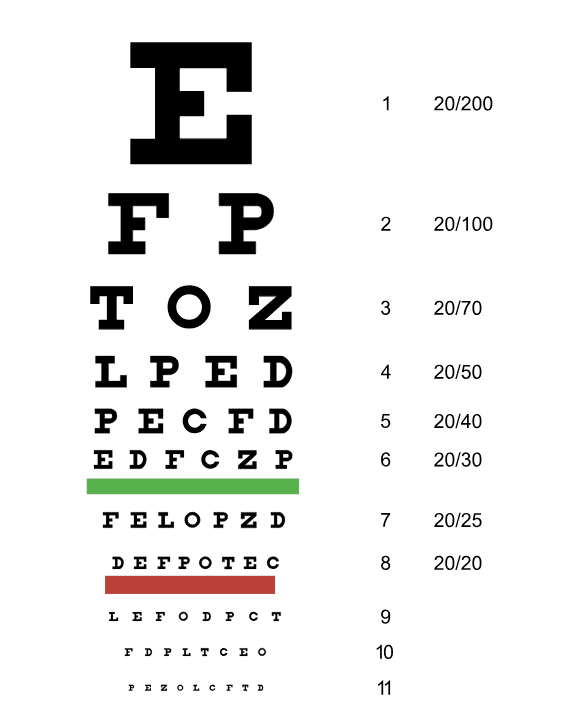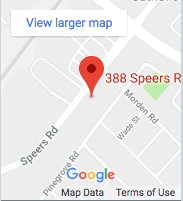
Low Tech Eye Chart
Anyone who’s been to an eye doctor for a checkup, knows about the eye chart. With all the modern technology available to eye doctors, the highly non-technical eye chart is still a valuable tool for your eye doctor to use to determine how well you see.
The low-tech eye chart is still valuable for monitoring visual acuity.
Testing Visual Acuity
An eye chart measures sharpness of vision or visual acuity. If you don’t already wear glasses or contact lenses, your eye doctor will use the results to judge whether you need them. If you already wear corrective lenses, the eye chart test will tell your doctor if you need a new prescription.
The Snellen Chart
The Snellen chart is the most commonly used eye chart. It was developed in the 1860s by Dutch eye doctor Hermann Snellen. Generally, this type of eye chart has 11 rows of block letters, the first row containing one very large letter. Each row under that contains letters that keep decreasing in size and the number of letters on each row increases from top to bottom, allowing for more letters on each subsequent line. Conventional Snellen eye charts use only the letters C, D, E, F, L, O, P, T and Z.
The test is done separately on each eye, with the other eye covered. You stand 20 feet away from the chart without your corrective lenses. In smaller offices, the chart is viewed using a mirror, so the test can be done within less than 20 feet of space. Mirror or not, the results are the same.
Visual acuity in the uncovered eye is determined by the smallest row of letters that the patient can read accurately. The test is repeated with the other eye and then both eyes together. You are considered to have normal visual acuity if you have 20/20 vision. It means that you can read a row of letters from 20 feet away that most human beings should be able to read from 20 feet away.
The Tumbling E Chart
In order to test young children, who don’t yet know the alphabet, or people who can’t read, Dr. Snellen also created an eye chart called the Tumbling E. This chart uses a capital letter E that faces in different directions. The person being tested is asked to use their fingers to show the direction in which the “fingers” of the E are pointing.
Another type of eye chart that could be used for children and people who couldn’t read was made up of simple pictures of houses, flowers and other such objects.
Why 20 Feet?
Anything we are viewing that is 20 feet or farther away is considered optical infinity by scientists, who came to that conclusion because of the way light waves travel and the way our eyes focus on objects. The focusing muscle in a normal, optically perfect human eye, is in a totally relaxed state when viewing objects at 20 feet or farther. Our eyes begin to change focus when things begin to move closer, in order to keep the objects clear.
Measuring Vision
Human vision is multi-faceted. Eye care professionals need some way to measure vision, so they can tell how far away from normal it might be or how much correction must be prescribed to bring someone to what is considered normal vision. Saying “vision is near normal” or “vision seems okay” would be difficult to interpret and would not be a professional way to record an exam.
However, to record someone’s vision as 20/30, enables an eye doctor to track how a person’s vision may or may not change over time.
Part of a Comprehensive Eye Exam
Your visual acuity is measured as part of a complete eye exam, which most people should have once a year. At the age of 40, early signs of disease or changes in vision may occur, so it’s important to be tested at that time.
Besides the eye test, other tests are used by the eye doctor to detect eye diseases, such as glaucoma, a problem with your retina or loss of peripheral (side) vision.
An Invention of the Industrial Age
During the time of rapid industrialization, good eyesight was needed for the increasing number of jobs, from railroad engineers to factory workers.
Before there was a standardized eye chart, each ophthalmologist had a chart they preferred. The Snellen eye chart allowed people to go to any eye care provider and from there, to any eyeglass maker and get the same results.
Today, the humble eye chart is still the best way for eye doctors to get an initial read on how good your vision is or to see if there have been any changes in your vision since your last eye examination.

